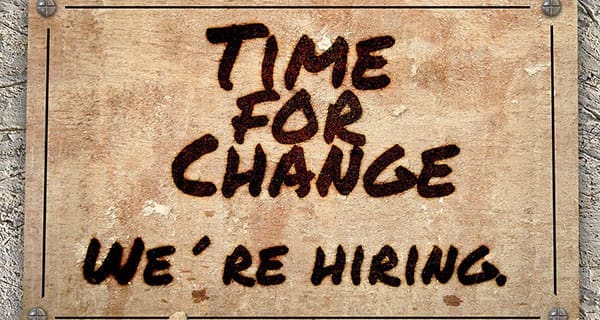The national job vacancy rate eased slightly to 3.1 per cent in the fourth quarter of 2018, down 0.1 per cent since the previous quarter, according to the Canadian Federation of Independent Business Help Wanted report.
It was the first decline since the second quarter of 2016.
The CFIB, in releasing its report on Monday, said 409,000 private sector jobs sat vacant for at least three months, nearly 41,000 more than a year ago.
In Alberta, there were 37,100 vacant jobs and the vacancy rate fell by 0.1 per cent to 2.3 per cent.
“This is the first decline in vacancy rates we’ve seen since Q2 2016 but the market is still quite tight despite it,” said Ted Mallett, CFIB’s vice-president and chief economist, in a statement.
“The situation in Quebec and British Columbia in particular hasn’t changed. Both provinces have vacancy rates well above the national average.”
The CFIB said Quebec continued to experience the highest vacancy rate at 3.9 per cent, followed by British Columbia at 3.5 per cent. Ontario’s vacancy rate was unchanged at 3.1 per cent. Manitoba (2.4 per cent), Alberta (2.3 per cent), Nova Scotia (2.2 per cent), and Newfoundland and Labrador (1.5 per cent) each experienced a decline in vacancy rates. New Brunswick (2.7 per cent), Saskatchewan (1.9 per cent) and Prince Edward Island (1.8 per cent) did not experience a change this quarter and maintained vacancy rates below the national average.
Unfilled jobs were 112,000 in Quebec, 66,600 in British Columbia and 160,600 in Ontario.
“Vacancy rates advanced in agriculture, construction and wholesale, while resources, manufacturing, professional services and personal services saw decreases. Despite the decline, personal services maintained the highest vacancy rate at 4.6 per cent, followed by construction (4.5 per cent). The information (1.7 per cent) and finance (2.2 per cent) sectors had the lowest vacancy rates. Businesses with fewer than 20 employees generally reported the highest vacancy rates,” said the CFIB.
– Mario Toneguzzi
The views, opinions and positions expressed by columnists and contributors are the author’s alone. They do not inherently or expressly reflect the views, opinions and/or positions of our publication.

